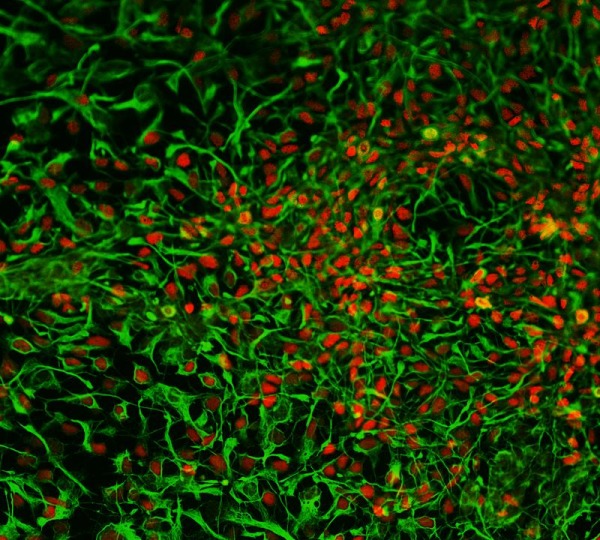
Scientists have made brain cells from human pee.
When a person urinates, skin shells are routinely shed from the lining in the kidney, and it's these cells that the researchers reprogrammed into stem cells, which can turn into any type of cell in the body. In this case, they transformed the cells into neurons, or brain cells. The new research, published Sunday (Dec. 9) in the journal Nature Methods, could one day provide a quicker way to make brain cells that are unique to an individual, Nature News reported.
And because the technique relies on urine, which is much easier to get than blood, it could be easier to extract such cells from almost any patient, including children, Marc Lalande, a researcher at the University of Connecticut Health Center told Nature News.
"It's easier to get a child to give a urine sample than to prick them for blood," Lalande said.
For years, scientists have been working on ways to turn ordinary cells into stem cells. Researchers have reprogrammed testicle stem cells to make insulin, turned brain cells from cadavers into stem cells and converted human skin into brain cells. The hope was that these brain cells could be used to treat diseases like Parkinson's and Alzheimer's.
But many early methods used viruses to permanently incorporate new genes into the DNA of the cells, wrote Kristen Brennand, a stem cell researcher at the Mount Sinai School of Medicine, who was not involved in the study, in an email.
Because the viral DNA stays inside the cells' genetic code permanently, it can make the cells' behavior unpredictable and even cause tumors.
Sign up for the Live Science daily newsletter now
Get the world’s most fascinating discoveries delivered straight to your inbox.
In the current study, a Chinese research team used a newer, safer approach. The team harvested skin cells that line the kidneys and are routinely shed in human urine. Next, the scientists injected new genetic instructions to reprogram cells to become brain cells. But unlike the viral method, those instructions only stick around temporarily, Brennand told LiveScience. [10 Cool Stem Cell Discoveries]
"Holes are made in the cell membrane so DNA can enter, but because the DNA doesn't integrate into the genome, but just sits in the cyplasm, it exists transiently," Brennand wrote.
The reprogramming instructions are therefore eventually lost as the cells divide, Brennand wrote.
With these new genetic instructions, the cells transformed into brain stem cells, which can turn into different types of brain cells. The transformation from kidney cell to brain stem cell took just 12 days, and within a month, the cells had morphed into full-fledged brain cells.
Unlike other stem cell technologies, the pee-based brain cells didn't form tumors when implanted into rats.
Because it is so easy to get human pee samples from almost anyone, the new technique could have advantages over other techniques, Lalande told Nature News.
Follow LiveScience on Twitter @livescience. We're also on Facebook & Google+.

Tia is the managing editor and was previously a senior writer for Live Science. Her work has appeared in Scientific American, Wired.com and other outlets. She holds a master's degree in bioengineering from the University of Washington, a graduate certificate in science writing from UC Santa Cruz and a bachelor's degree in mechanical engineering from the University of Texas at Austin. Tia was part of a team at the Milwaukee Journal Sentinel that published the Empty Cradles series on preterm births, which won multiple awards, including the 2012 Casey Medal for Meritorious Journalism.









